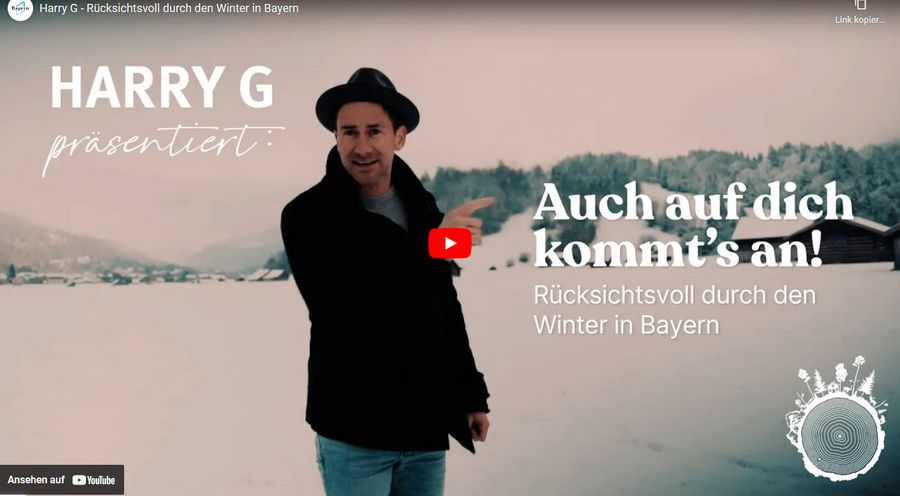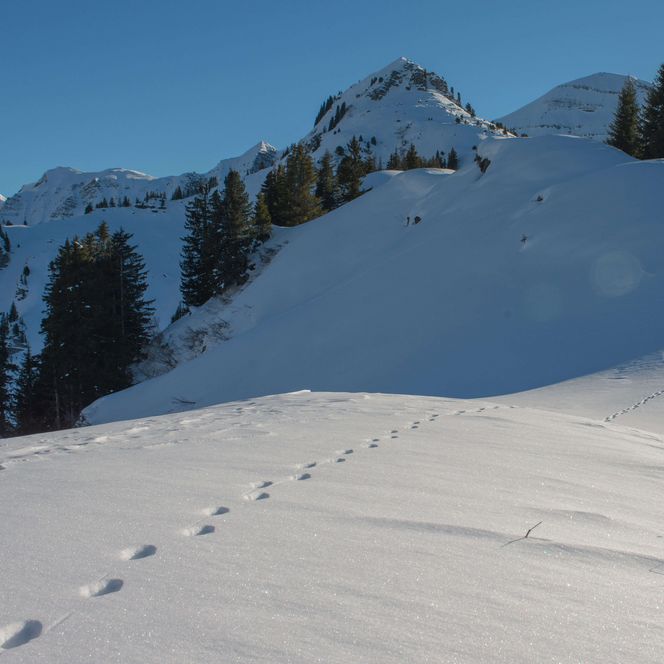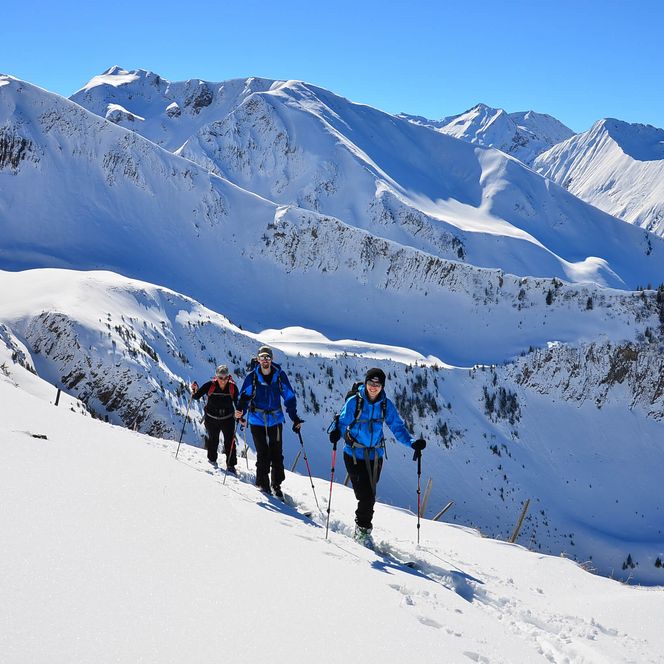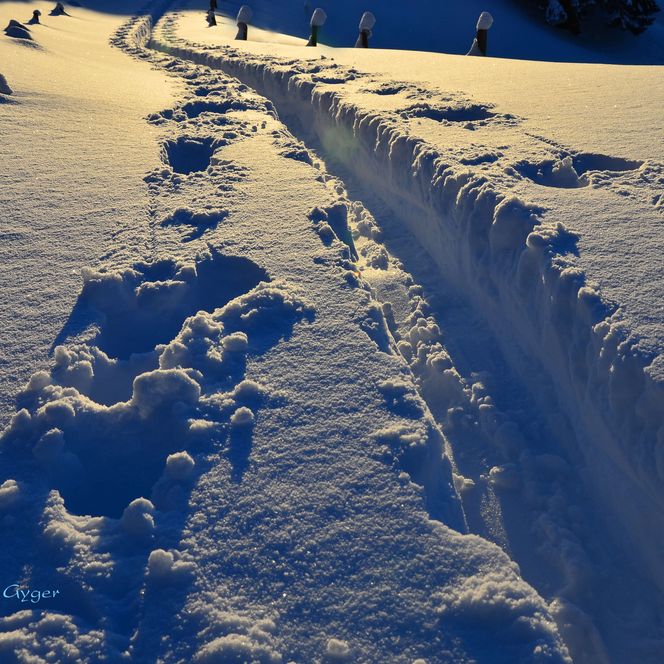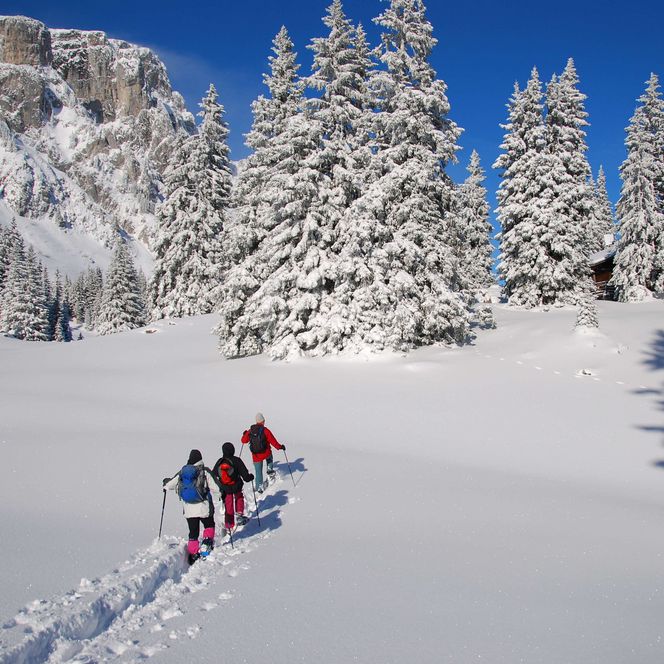Wildlife in the snow
Let us show you how to respect the local wildlife, such as black grouse and chamois
Getting first tracks in the deep snow far away from the slopes is pure freedom! But at what cost? What is considered freedom to humans, is wildlife’s struggle for survival. Let us show you how to plan your tours while respecting the local wildlife. It is important to know how to behave when you go off-piste.
Do you know the true implications of practicing snow sports off-piste?
-
Sporty, active people share their outdoor playground with the habitat of wild animals
-
Winter is the hardest season of the year for wild animals, it is the season of survival
-
Sharing the space can work well with good planning
-
The right behaviour off-piste gives you the opportunity to experience nature at its best
Coexistence is possible
An outdoor playground to us; the wild animals’ habitat!
After a day of snow sports in the mountains you can go home or back to your cosy accommodation. In such a nice atmosphere you may forget that for the animals who live in the mountains, life is much harder.
The first person who disturbs matters
The number of people practicing snowshoe hiking, freeriding and ski touring is constantly increasing. A lot of them venture out into nature without a second thought. However, this can cause problems for the wild animals. The first disturbance matters and considerably undermines the animals’ limited reserves, which might not last until spring when their food starts growing again. Thoughtless behaviour endangers the animals’ survival.
First-hand experience
School children living in the Diemtigtal Nature Park experienced at first-hand how strenuous it is to move around in fresh snow, how much energy is needed to flee in deep snow and what it feels like to stay in a snow cave that they dug themselves for protection from the icy wind. “I liked staying in the snow cave, but it felt very uncomfortable not knowing when we would be forced to flee.” reported a schoolgirl right after the experience. The teenagers imitated black grouse. They sought shelter in a snow cave and stayed there until careless snowshoe hikers and their leash-less dogs disturbed them, and they suddenly had to flee from their shelter.
There is enough space for all of us
This simple example shows that the more we know about wild animals, the more we will respect them when we are outdoors. This knowledge enables us to bring home even more memorable experiences. You’ll still be able to enjoy nature to the fullest because if you behave respectfully, you may even observe undisturbed wild animals in their natural habitat. Therefore, it is important to take responsibility for them by checking before going on a tour if it leads you through a wildlife protection zone. Designated wildlife areas and wildlife reserves may only be crossed in designated areas.
How do I know, where the designated wildlife protection zones are?
Take a look at the examples on the Diemtigtal (Diemtig valley) map, which is a region frequently visited by ski tourers. On this map, the orange marked areas are designated wildlife areas. Thanks to your considerate behaviour, wild animals can find refuge in these areas too. You can easily recognise the pink-marked ski and snowboard tours and the blue-marked snowshoe tours. Arrows indicate the suggested direction, and slope gradients over 30 degrees are marked in light pink.
Are your maps still up to date?
Designated wildlife areas aren’t set in stone. The areas are established and updated based on long-term wildlife observations (monitoring). An example from the Diemtigtal Nature Park: for several years the black grouse, which always stays within its territory, has been closely observed. If this grouse is regularly disturbed in its habitat, it will become extinct.
Find the current snow sports map here > respektiere-deine-grenzen.ch. Should you still have older maps at home, please compare them with the current online version.
Official routes aren’t a license for unchecked behaviour
Wild animals don’t know which areas are designated wildlife areas. Even if you are exploring the area outside of these borders, pay attention to not disturb the wildlife. Especially in the forest it is important to stay on marked paths and to avoid the edge of the forest because that’s where the risk of disturbing wildlife is highest.
If you happen to see wild animals...
Enjoy the moment! It is a special experience and a lasting memory you’ll be sure to treasure. Observing wildlife from far away is one of the most poignant experiences you can have in nature. Give the animals time to go on their way before you continue with your tour.

Good to know
of people practicing snow sports off-piste has multiplied in recent years – this has increased pressure on wildlife
the black grouse will probably suffer the same fate as the capercaillie, which was native to the Diemtigtal until 30 years ago, but can no longer be found there today
the campaign Respect to Protect which advocates for the protection of flora and fauna close to local recreation areas
